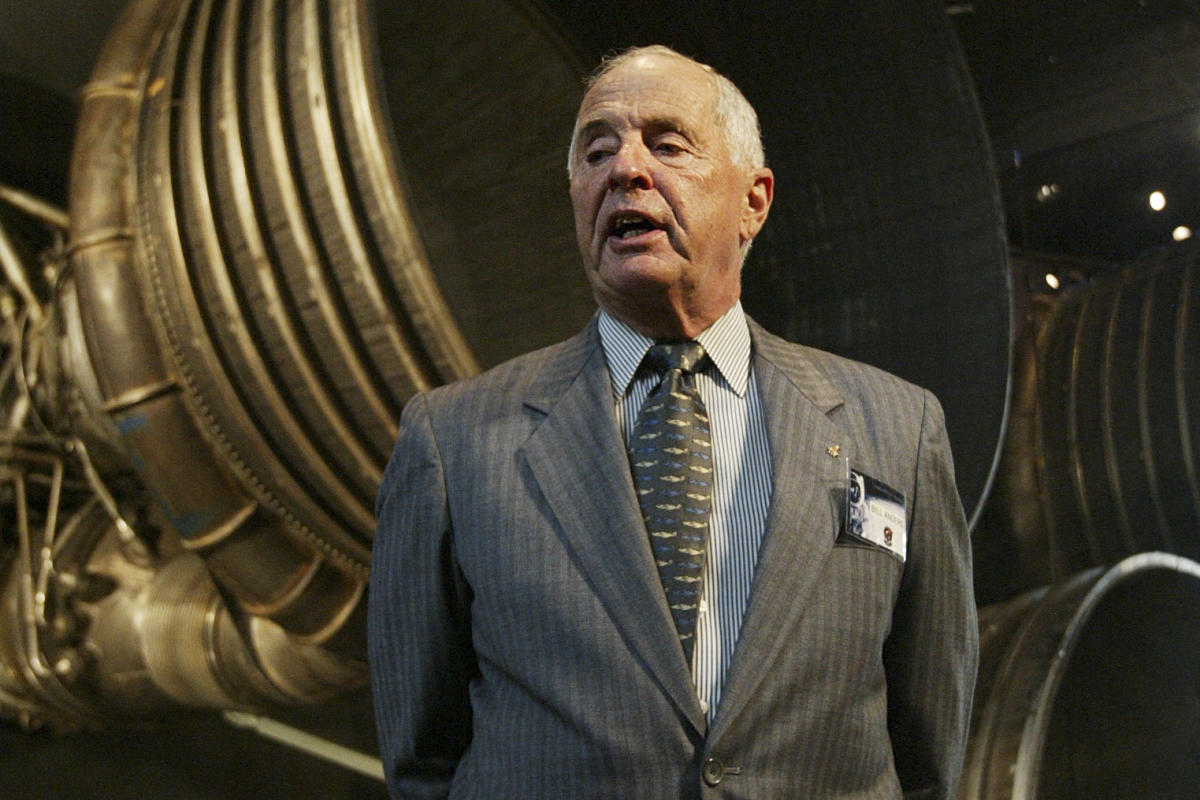The former Apollo 8 astronaut best known for taking the iconic “Earthrise” photo, who died last month while piloting a plane over the waters off Washington state, was doing a flyby near a friend’s house when the fatal accident occurred, federal authorities said Tuesday.
William Anders, whose “Earthrise” photo showed the planet as a shadowed blue marble from space in 1968, had texted a friend to say he planned to do a flyby near her house on the western shore of Orcas Island, the National Transportation Safety Board said in its preliminary report.
The friend said Anders’ flybys were not unusual, according to the NTSB. She said that he typically did two flybys, and while he sometimes rocked the airplane wings, “he never performed any kind of aerobatic maneuvers.”
Around 11:37 a.m. on June 7, the friend began to hear the “familiar” noise of his airplane, the NTSB said. Shortly after, she saw the older-model Beech A45 overhead traveling north along the shore in front of her house.
She briefly lost sight of the plane as it flew behind trees. When she saw it come back into view it was heading south and flying over the water. After it passed by, she saw the left wing drop and thought it was part of his routine. But the wing continued to drop as the plane plummeted toward the water below.
At the same time, another witness on the same shoreline north of Anders’ friend’s home, was using his phone to film the vintage airplane passing by, the NTSB said. Over the course of the video, the plane can be seen plunging toward the water in a near vertical dive before its right wingtip strikes the water.
The friend and the person who took the video were the only two witnesses to come forward, the NTSB said.
The plane sank near the north end of Jones Island, which is off the western shore of Orcas Island, San Juan County Sheriff Eric Peter said. The body of the 90-year-old Anders was recovered that afternoon.
Most of the wreckage was recovered in the week following the crash and has been stored for further examination, the agency said.
Anders’ “Earthrise” photograph, the first color image of Earth from space, is one of the most important photos in modern history for the way it changed how humans viewed the planet. The photo is credited with sparking the global environmental movement for showing how delicate and isolated Earth appeared from space.
Anders, a retired major general, has said the photo was his most significant contribution to the space program along with making sure the Apollo 8 command module and service module worked.
His son, retired Air Force Lt. Col. Greg Anders, told The Associated Press after his father’s death that the family was devastated.
“He was a great pilot and we will miss him terribly,” he said.



